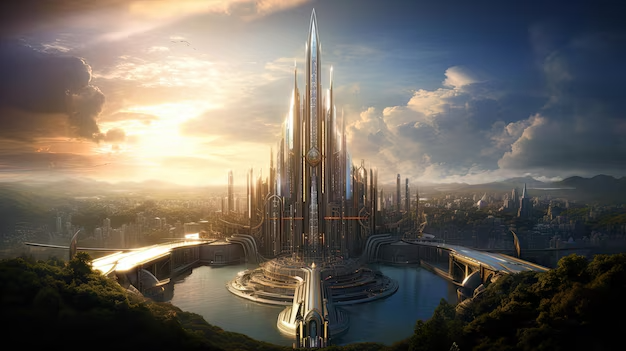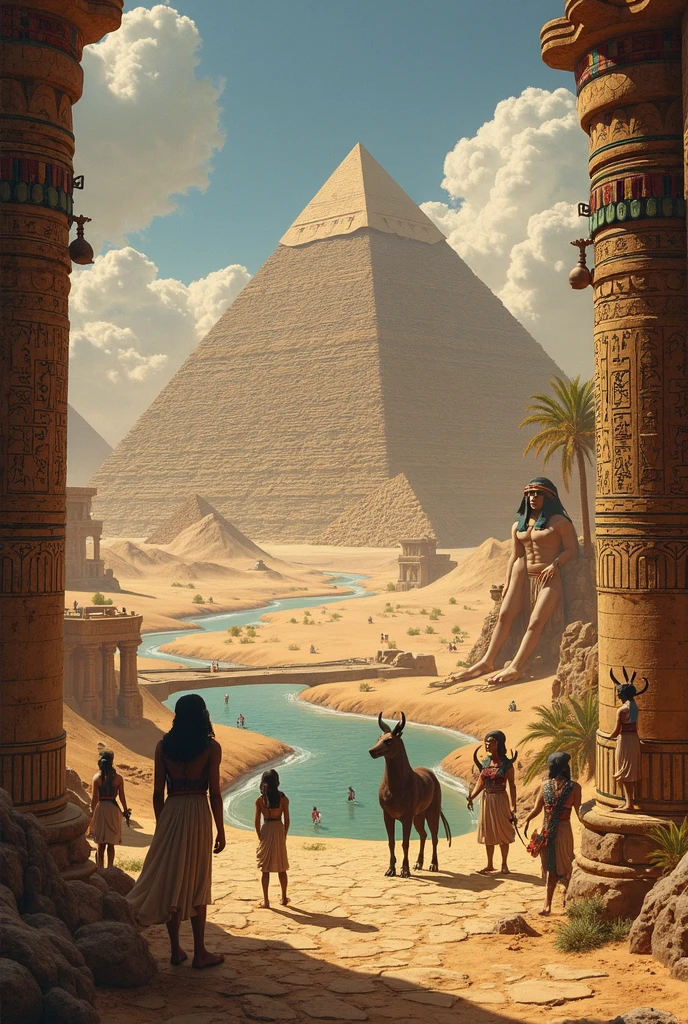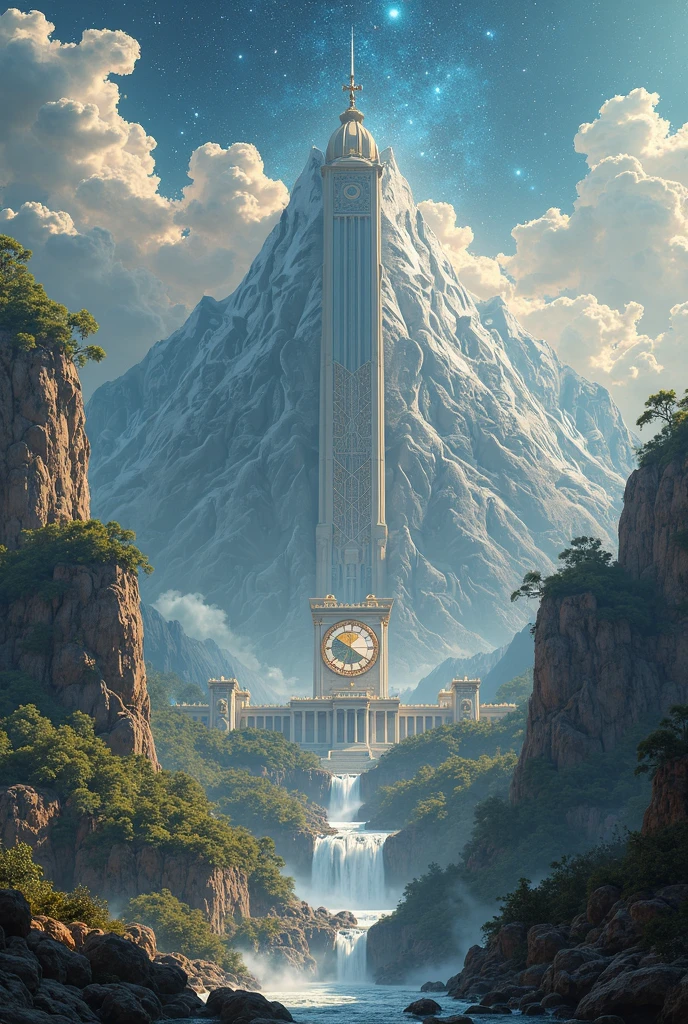Slavic Mythology: Gods, Legends, and Cosmic Battles
The rich tapestry of Slavic mythology is filled with powerful deities, epic conflicts, and deep symbolism. Among its most prominent figures is Perun, the god of thunder and storms, whose battles with Veles, the serpentine god of the underworld, form the core of many Slavic myths. This article explores the pantheon, legends, and cultural significance of these ancient beliefs.
The Pantheon of Slavic Gods
Slavic mythology features a diverse array of gods and spirits, each governing different aspects of nature and human life. Below is a table highlighting the most important deities:
| Deity | Domain | Symbols |
|---|---|---|
| Perun | Thunder, Storms, War | Oak, Axe, Lightning |
| Veles | Underworld, Cattle, Magic | Serpent, Horns, Cattle |
| Svarog | Sky, Fire, Blacksmithing | Sun, Hammer, Forge |
| Triglav | Three-Headed God (Heaven, Earth, Underworld) | Three Faces, Black Horse |
Perun: The Thunder God
Perun was the supreme god of the Slavic pantheon, often compared to Thor in Norse mythology or Zeus in Greek myths. He ruled over the skies, wielding lightning as his weapon and commanding the storms that nourished the earth.
Attributes of Perun
- Weapon: A mighty axe or hammer that returned to his hand after being thrown.
- Sacred Tree: The oak, which was often struck by lightning, symbolizing his power.
- Animal Associations: Eagles and bulls, representing strength and dominance.
Perun was worshipped widely among the Rus people, particularly by warriors who sought his favor in battle. His cult was so strong that early Christian missionaries often replaced his imagery with that of Saint Elijah, who also controlled thunder.
Veles: The Trickster God of the Underworld
In stark contrast to Perun, Veles was the god of the underworld, cattle, and magic. He was often depicted as a serpent or a horned deity, slithering between worlds and challenging the cosmic order.
The Eternal Battle: Perun vs. Veles
The conflict between Perun and Veles is central to Slavic mythology. According to legend:
- Veles would steal Perun’s cattle or kidnap his family, hiding in the roots of the World Tree.
- Perun would pursue him, unleashing storms and lightning to drive him out.
- The battle would end with Veles being defeated but never destroyed, ensuring the cycle continued.
This myth symbolized the eternal struggle between order (Perun) and chaos (Veles), as well as the changing of seasons.
Svarog: The Divine Blacksmith
Another key figure in Slavic mythology was Svarog, the god of fire, sky, and craftsmanship. He was believed to have forged the sun and given laws to humanity.
Svarog’s Legacy
- Father of Dazhbog, the solar deity who brought warmth and prosperity.
- Associated with the sacred fire that was kept burning in temples.
- His name is linguistically linked to the Sanskrit “Svarga,” meaning heaven.
Triglav: The Three-Headed Guardian
Among the Western Slavs, particularly the Polabians and Pomeranians, Triglav was a significant deity. His three heads represented dominion over heaven, earth, and the underworld.
| Head of Triglav | Domain |
|---|---|
| First Head | Sky (ruled by Perun) |
| Second Head | Earth (human realm) |
| Third Head | Underworld (ruled by Veles) |
Slavic Mythology in Modern Culture
Though Slavic paganism faded with Christianization, its influence persists in folklore, literature, and even video games. The gods Perun, Veles, and Svarog continue to inspire modern retellings.
For further reading, check out these resources:
- Encyclopedia Britannica: Slavic Religion
- World History Encyclopedia: Slavic Religion
- Ancient Origins: Slavic Mythology
Explore more fascinating articles on mythology and history, and don’t forget to follow us on facebook.com/zatiandrops for daily updates!
Lesser-Known Deities and Spirits
Beyond the major gods like Perun and Veles, Slavic mythology teems with lesser-known but equally fascinating beings. These entities governed everyday life, from household chores to natural phenomena.
Domovoi: The Household Guardian
The Domovoi was a protective spirit residing in homes, often depicted as a small, bearded man. Families would leave offerings like bread or milk to keep him content. If angered, he could cause mischief—hiding objects or even strangling sleepers.
- Appearance: Gray-haired, sometimes with glowing eyes or animal features.
- Role: Protected livestock, warned of danger, and ensured prosperity.
- Modern Influence: Inspired characters like J.K. Rowling’s house-elves in Harry Potter.
Rusalka: The Water Nymph
Rusalki (plural) were spirits of drowned women or unbaptized children, haunting lakes and rivers. Unlike Western mermaids, they were often malevolent, luring victims to watery deaths with their songs.
| Type of Rusalka | Origin | Behavior |
|---|---|---|
| Drowned Maidens | Suicides or murder victims | Vengeful, targeted men |
| Unbaptized Souls | Children who died prematurely | Playful but dangerous |
Cosmology: The Slavic World Tree
Central to Slavic belief was the World Tree, often an oak or birch, connecting three realms:
- Prav (Heaven): Home of gods like Perun, symbolized by the branches.
- Yav (Earth): The mortal realm, represented by the trunk.
- Nav (Underworld): Veles’ domain, hidden among the roots.
Birds perched on the branches symbolized divine messengers, while serpents coiled around the roots embodied chthonic forces. This structure mirrored the Norse Yggdrasil but with distinct Slavic symbolism.
Rituals and Festivals
Slavic paganism was deeply tied to agricultural cycles, with rituals ensuring fertility and warding off evil. Key celebrations included:
Kupala Night
Held during the summer solstice, Kupala Night honored fire and water. Participants:
- Jumped over bonfires to purify themselves.
- Sought the mythical fern flower, believed to grant wisdom.
- Floated wreaths on rivers to predict marriage prospects.
Maslenitsa
This pre-Lenten festival celebrated the end of winter with:
| Tradition | Purpose |
|---|---|
| Pancake feasts | Symbolized the sun’s warmth |
| Straw effigy burning | Drove away winter spirits |
Creatures of Legend
Slavic folklore brimmed with mythical beasts, many of which persist in regional tales today.
Zmey Gorynych
The Zmey was a three-headed dragon, often slain by heroes like Dobrynya Nikitich. Each head regrew if not seared with fire, echoing the hydra myth.
Baba Yaga
This ambiguous witch lived in a hut on chicken legs, aiding or hindering travelers based on their wit. Her origins may trace back to an ancient goddess of death and rebirth.
- Symbolism: Represents the wild, untamed forces of nature.
- Modern Appearances: Featured in games like Rise of the Tomb Raider.
Christianization and Syncretism
As Christianity spread, Slavic deities were often recast as saints or demons. For example:
| Pagan Figure | Christian Equivalent |
|---|---|
| Perun | Saint Elijah (thunder miracles) |
| Veles | Saint Blaise (protector of cattle) |
| Mokosh | Virgin Mary (fertility) |
Folk traditions blended pagan and Christian elements, such as leaving offerings for Domovoi despite church disapproval. Even today, rural communities preserve these practices in modified forms.
Regional Variations
Slavic tribes across Eastern Europe developed unique mythic nuances:
East Slavs (Kievan Rus)
- Emphasized Perun as a patron of rulers.
- Venerated Rod, a creator god linked to ancestry.
West Slavs (Polabians)
- Worshipped Svetovid, a four-faced war god.
- Built elaborate temples, like the one at Arkona.
South Slavs (Bulgarians, Serbs)
- Had Zduhać, storm-wielding shamans.
- Feared Talason, a vampire-like spirit.
Archaeological Evidence
Artifacts like the Zbruch Idol (a four-faced pillar) and temple ruins confirm the richness of Slavic paganism. Recent discoveries include:
- Perun’s Axes: Amulets found from Ukraine to Poland.
- Ritual Masks: Used in seasonal ceremonies.
- Sacred Springs: Sites where offerings were deposited.
For deeper dives, explore these academic works:
Explore more fascinating articles on mythology and history, and don’t forget to follow us on facebook.com/zatiandrops for daily updates!
The Role of Women in Slavic Mythology
While male deities like Perun dominated the pantheon, Slavic mythology also featured powerful female figures who governed fertility, fate, and domestic life. These goddesses and spirits played crucial roles in both cosmic and everyday affairs.
Mokosh: The Great Mother
Mokosh was the primary female deity, associated with earth, moisture, and women’s crafts like spinning. She was often invoked during childbirth and harvest seasons.
- Symbols: Spindle, linen, wet earth
- Christian Parallel: Merged with the Virgin Mary as “Mother Moist Earth”
- Modern Legacy: Survives in Russian folk embroidery patterns
The Rozhanitsy: Fate Weavers
These three sister goddesses determined human destinies at birth, similar to the Norse Norns or Greek Moirai.
| Sister | Role | Time Aspect |
|---|---|---|
| Past | Spun the thread of life | What was |
| Present | Measured the thread | What is |
| Future | Cut the thread | What will be |
Sacred Places in Slavic Belief
The Slavs consecrated natural sites as portals to the divine, avoiding artificial temples in early periods.
Groves and Trees
Oak groves were particularly sacred to Perun, while birch trees symbolized purity and were used in healing rituals. Violating these spaces was believed to bring divine wrath.
Water Sources
Springs, rivers, and wells were guarded by spirits like the Vodnik (water demon). Offerings of bread, honey, or ribbons were common to ensure clean water and prevent drownings.
- Healing Springs: Sites where the sick bathed at dawn
- Divination Wells: Peering into water at midnight revealed futures
- Sacred Rivers: The Dnieper and Volga hosted seasonal rituals
Death and the Afterlife
Slavic views of death were complex, blending ancestor worship with beliefs about soul journeys.
The Nav Realm
Unlike Christian hell, Nav was a shadowy underworld where souls resided based on their earthly deeds. Warriors feasted with Perun, while evildoers wandered as restless spirits.
Funerary Practices
- Burial Mounds: Called kurgans, these contained weapons, food, and ritual boats
- Dziady: Ancestor festivals where families communed with the dead
- Vampire Burials: Suspected undead were staked or weighed down with stones
Mythical Artifacts and Symbols
Slavic lore featured magical objects with deep symbolic meanings.
| Artifact | Associated Deity | Power |
|---|---|---|
| Alatyr Stone | Svarog | Center of the world, healing |
| Veles’ Golden Horns | Veles | Control over cattle and wealth |
| Perun’s Oak | Perun | Lightning protection |
Seasonal Myths and Agricultural Cycles
Slavic mythology deeply intertwined with farming calendars, explaining natural phenomena through divine actions.
The Theft of Spring
A lesser-known myth describes how Veles stole the warmth of spring, hiding it underground until Perun‘s thunder cracked the earth, allowing new growth to emerge.
The Harvest Sacrifice
The last sheaf of grain was often left in fields as an offering to the Poludnitsa (noon spirit), ensuring next year’s bounty. This practice survived into the 20th century in remote villages.
Reconstruction of Slavic Paganism
Modern Rodnovery (Slavic Native Faith) movements attempt to revive these ancient beliefs, though interpretations vary widely.
- Authenticity Challenges: Christianization destroyed many primary sources
- Regional Differences: Ukrainian vs. Polish groups emphasize different deities
- Political Aspects: Some nationalist groups co-opt symbols like Perun‘s axe
For those interested in primary texts, the medieval Primary Chronicle contains early Slavic pagan references alongside Christian narratives.
Explore more fascinating articles on mythology and history, and don’t forget to follow us on facebook.com/zatiandrops for daily updates!
Shamanic Traditions in Slavic Culture
Before the establishment of organized pagan priesthoods, Slavic tribes relied on volkhvs – shamans who mediated between humans and the spirit world. These figures played crucial roles in communities as healers, seers, and ritual leaders.
Powers of the Volkhv
- Shape-shifting: Could transform into wolves or bears
- Weather control: Called upon Perun for rain or protection from storms
- Soul journeying: Entered trances to visit Nav (underworld)
| Shamanic Tool | Purpose | Modern Equivalent |
|---|---|---|
| Ritual drum | Altered consciousness | Meditation instruments |
| Bear claw necklace | Protection charm | Amulets |
| Oak staff | Channeling divine power | Ritual wands |
The Solar Deities Cycle
Slavic mythology featured a fascinating progression of solar gods representing the sun’s annual journey:
- Kolyada: Winter sun child, born at solstice
- Yarilo: Spring sun, god of vegetation and passion
- Dazhbog: Midsummer sun at peak strength
- Svetovit: Autumn sun preparing for winter
Yarilo’s Unique Aspects
This youthful god of spring was celebrated with wild dances and symbolic marriages. His death and rebirth cycle mirrored the grain’s growth, with these key elements:
- White horse: Symbolized purity and solar movement
- Wheat crown: Worn by ritual participants
- Straw effigy: Burned or drowned to ensure fertility
Mythological Creatures in Slavic Bestiary
Beyond the well-known Baba Yaga and Zmey, Slavic folklore teemed with unique beings:
Leshy – Forest Lord
This shape-shifting spirit protected woodlands, appearing as:
| Form | Behavior | Modern References |
|---|---|---|
| Giant with grass hair | Misled travelers | Witcher game series |
| Ordinary tree | Observed humans | Russian fairy tales |
Kikimora – Household Plague
This female spirit haunted homes, especially those built on unconsecrated ground. She:
- Tangled yarn at night
- Pinched sleeping children
- Could be appeased with embroidered towels
Sacred Numbers in Slavic Tradition
Numerology played significant role in rituals and mythology:
- 3: Sacred to Triglav (three worlds, three heads)
- 7: Days of week connected to planetary gods
- 9: Circles in ancient Slavic temples
- 40: Days of mourning or purification
Ritual Applications
These numbers governed:
- Temple construction
- Incantation repetitions
- Days between rituals
Slavic Mythology in Contemporary Arts
Modern creators increasingly draw from this rich tradition:
| Medium | Example | Mythological Element |
|---|---|---|
| Literature | The Bear and the Nightingale | Domovoi, frost demons |
| Games | Black Book | Slavic underworld |
| Music | Pagan folk bands | Recreated ritual chants |
For authentic musical reconstructions, explore Smithsonian Folkways recordings of traditional Slavic rituals.
Explore more fascinating articles on mythology and history, and don’t forget to follow us on facebook.com/zatiandrops for daily updates!


